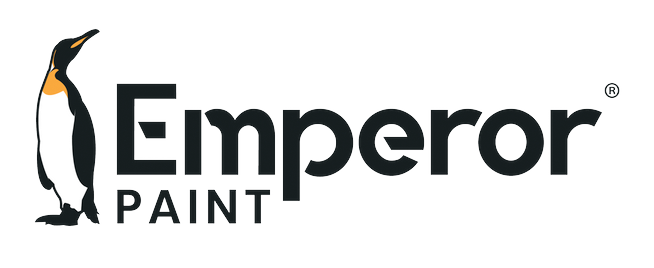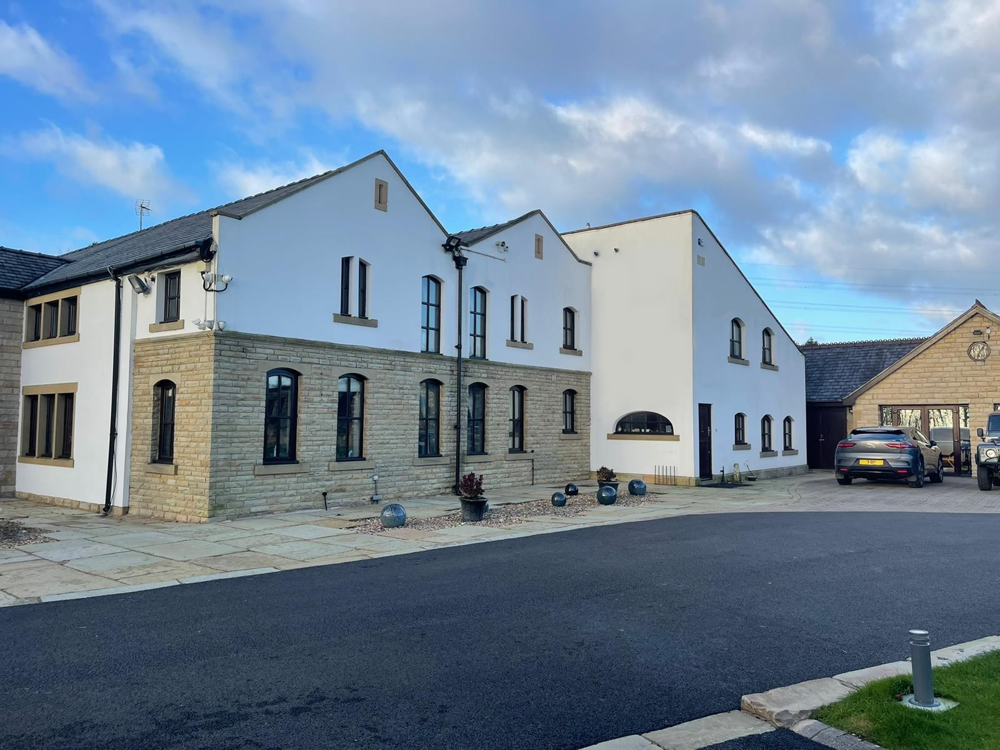
Painting the outside walls of our houses is a DIY job that will be on many people's to-do list when the temperature rises and the rain subside (somewhat). That is why our experts have put together this handy guide to painting outside walls, so you can find the information you need to get started, all in one place.
Why Paint Outside Walls?
Exterior painting is something that anyone can do, as long as they have the right information. The first place to start is with the question of whether or not it is a good idea to paint your house? The reality is, there are always risks involves with any decorating project that must be considered. When it comes to painting a house or gardens walls, take time to consider whether this is something that will provide you with long-term value. Especially in the case where you are painting bare masonry, as removing the paint back to a bare surface is a difficult task, so do some research into what the final look you want to achieve is. If you own a heritage property, you may also have regulations that dictate what you can and can't do to the property.
By painting exterior walls yourself, you are also running the risk of achieving poor results that can be an eye-sore. It is not as simply as grabbing a paint brush and putting on some paint. There are crucial steps you need to take in order to get long-lasting results that will improve the look of your property.
Aside from the risks, there are a number of reasons why you may want to paint outside walls:
1. A CHANGE OF COLOUR
A lick of paint is an easy way to give your home a completely different look. Whether you want to modernise it with a white or grey shade, or want to give it a bit of personality with a pink or blue, the options are endless. Whether you have a new or old property, the kerb appeal of a newly painted house truly is a thing to behold!
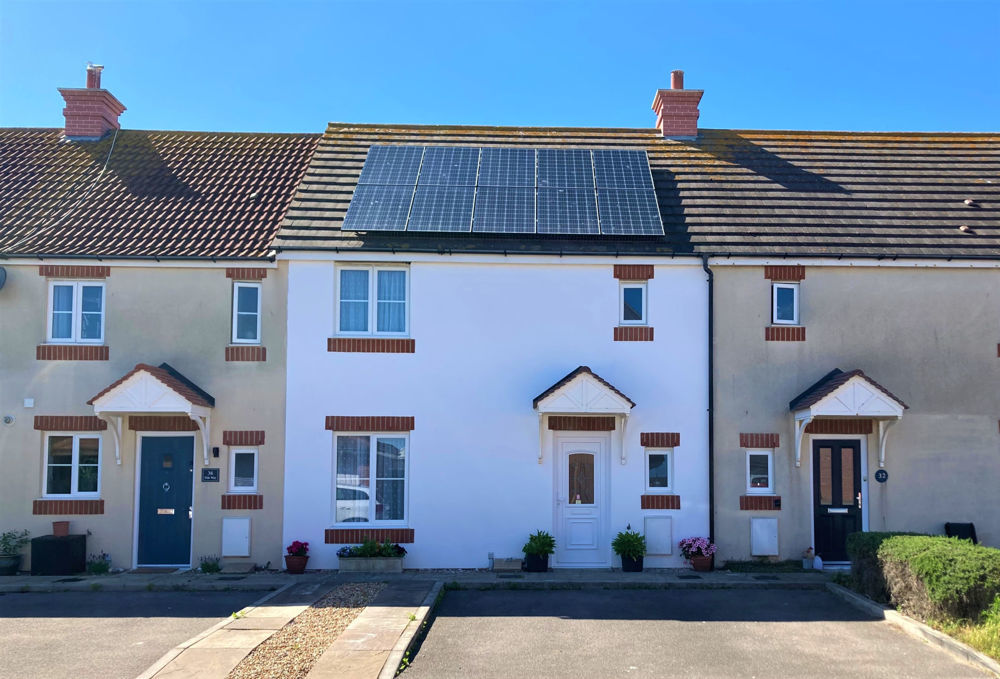
2. ADD VALUE
Adding value to a property is easier said than done, especially with the expense involved in many renovation works. With painting outside walls, this is a cost-effective and non-invasive way to add value to a property. Whether you are thinking about the future or plan to sell the property, a beautiful exterior is the perfect way to invest in your house.
3. PROTECTION
A lesser known benefit of painting a house is the protection it can provide. Despite what many believe, natural mineral surfaces such as brick, stone & concrete are porous, meaning they absorb moisture. This moisture can cause a multitude of problems, including damp, damage, heat loss & discolouration.
In terms of damage, moisture is the single biggest cause of building material deterioration. When moisture enters a wall, it can undergo a freeze-thaw cycle when temperatures drop. When the moisture freezes from a liquid to a solid it expands, which can cause cracks to open up in brickwork or render. Furthermore, highly saturated materials can be attacked by the moisture, causing mortar to crumble and brick faces to become damaged. All of this damage allows more water to enter the exterior wall, leading to further damage each time.
When moisture absorbs into the external wall of a property, it can also lead to penetrating damp. This moisture can travel through the internal wall, either due to cavity wall insulation or due to the house being a solid wall construction. This leads to black mould and other moisture related problems.
Damp exterior walls lead to heat loss. To put simply, wet walls transfer heat quicker than dry ones. With 35% of a house's heat being lost from the walls, by having damp external walls, the energy efficiency of a property can be greatly impacted.
Finally, the moisture within exterior walls can have a real impact on its kerb appeal. also allows moss and other green growth to grow and thrive, causing exterior walls to become tired and dirty looking. Furthermore, the moisture also causes the brick or render to have darker patches where the moisture gathers, further creating an eye-sore on the external walls of the house.
By applying a masonry paint that has waterproofing properties, the impact that moisture has can be significantly reduced, preventing outside walls from deteriorating in appearance and performance.

What Paint To Use On Outside Walls
When it comes to painting houses, there are specially designed exterior paints for this task in the form of masonry paint. Masonry paint is a durable form of paint that can be applied to any walled surface, including brick, stone & render. These masonry paints vary widely in terms of formulation & durability. Understanding which type of masonry paint is best for you is crucial when deciding which paint to opt for. Here are the four main types of masonry paint:
ACRYLIC-BASED MASONRY PAINT
Acrylic-based masonry paint is the most common type of masonry paint that you will find in the UK. These are water-based formulations that are designed to offer some level of weather protection. Despite popular belief, acrylic masonry paints are not waterproof. They are often referred to as 'weatherproof' or 'weather-resistant' instead of 'waterproof' or 'water repellent'. This is because they can absorb moisture much like bare masonry. Furthermore, they generally have low breathability that prevents water vapour from easily passing through the surface.
Any moisture that finds itself absorbed by the paint can then become trapped under the surface as it can't naturally breathe out. After time, the paint film is broken because of this, causing the paint to fail. This is why standard masonry paints come with lifespans of 1-5 years.
For small DIY projects or for a cheaper option, acrylic masonry paint is an ideal choice, however if you are looking for a long-term solution, it may be advisable to opt for a higher quality formulation.
SILICONE-BASED MASONRY PAINT
Silicone masonry paint is a technologically advanced form of masonry paint that is water repellent & highly breathable, which in combination allow it to keep exterior walls dry. They have been designed using high-tech ingredients to maximise the performance of the paint, which is why silicone masonry paint often comes with a 20+ year lifespan. Another big benefit of silicone masonry paint is that while it can be used on all substrates such a brick, stone & concrete, it is highly compatible with silicone renders such as K-rend. This is not the case with some other masonry paints.
The technology involved in producing silicone masonry paint does come at a higher cost compared to a standard acrylic masonry paint. Having said this, the long-term durability means that you could save money in the long-run by not having to repaint the surface a few years down the line.
OIL-BASED MASONRY PAINT
Oil-based masonry paint, otherwise known as pliolite, is a previously common form of masonry paint that is now reserved solely for specific uses. Water-based paints must be applied above 5°C as the paint cannot dry, which is not the case with pliolite as this can be applied down to -5°C. It also is shower resistant very quickly, preventing the paint from washing off straight after application due to rainfall. While weather resistant, pliolite has a very low breathability, meaning it can have a big impact on the ability for a house to stay dry and damp free. This is why it is only used in certain circumstances in commercial painting & is very rarely used by homeowners today.
LIMEWASH
Limewash some time ago would have been the go-to masonry coating. It is a traditional form of masonry paint that is highly breathable, which is why it is still sometimes used on heritage properties today. Unfortunately, as a natural formulation, it does not contain anything to give it weather protection or much durability, meaning it needs to be re-applied regularly. For this reason, many heritage properties are now painted using highly breathable silicone formulations which can help protect the property while not impacting the water vapour permeability.
Super Hydrophobic Technology
We developed our highly advanced super hydrophobic nano-technology in order to provide the ultimate masonry protection to homeowners.
Emperor Masonry Paint is a silicone masonry paint that has been designed to offer high breathability, as well as water repellent protection that completely waterproofs exterior brick walls. It achieves this by creating a super hydrophobic surface on exterior brick that means any rainfall forms 'beads' on the surface and simply falls straight off the painted wall before it can absorb into the building.
This combination of super hydrophobic technology and high breathability means while water cannot absorb into the wall, any moisture already in the wall can freely evaporate out. This assists in reducing penetrating damp.
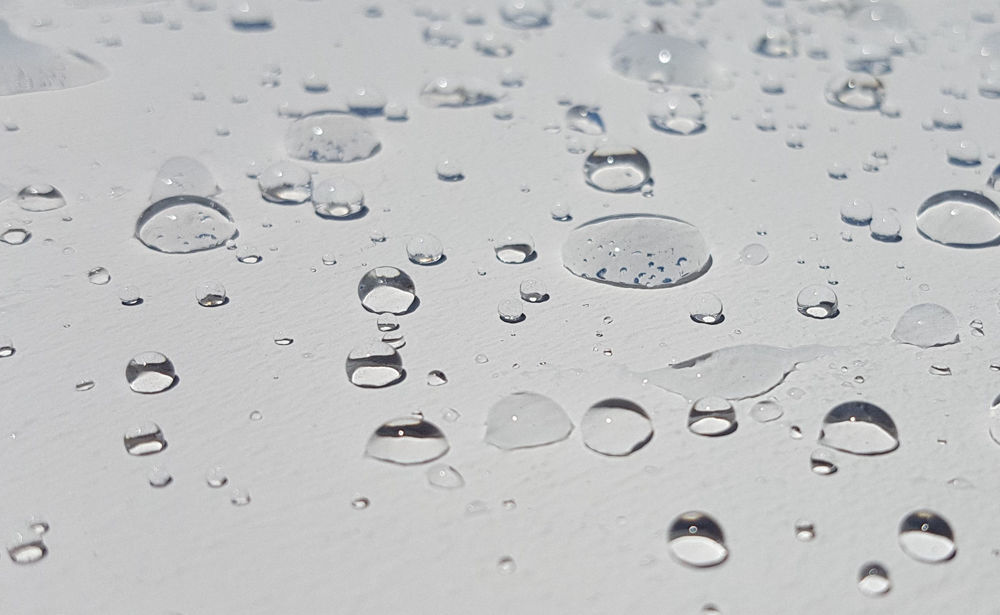
To test the technology, we took it to an independent UKAS accredited laboratory to test the technology. Emperor Masonry Paint was found to have no impact on the breathability of the surface once painted and prevented water absorption by 96%. Not only this but it was also tested in a 25-year accelerated weathering process, which found that after 25 years of heavy weathering, it showed no signs of change in appearance or performance. As it looked and performed like it did when it was applied, Emperor Masonry Paint comes with a lifetime guarantee as it will far exceed the 25 year proven performance.
This super hydrophobic technology has a number of other benefits, including self-cleaning and heat retaining properties. Just like water cannot attach to the painted surface, neither can dirt. Any dirt or debris simply washes off the surface with any rainfall. Furthermore, the moisture that allows fungal growth such as moss & lichens to grow on the wall is prevented. A property that previously suffered from large scale green growth was painted using Emperor Masonry Paint. After 8 years, the green growth has been eradicated.

Lastly, by keeping brick walls dry, Emperor Masonry Paint helps to improve the heat retention of exterior walls. In the independent testing a brick wall left unpainted was found to be on average 6°C colder than the brick wall painted with Emperor Masonry Paint. For this reason, Emperor Masonry Paint has been verified by the Energy Saving Trust following their independent review process. This is because by keeping exterior walls warmer, Emperor Masonry Paint can help reduce heat loss and improve the energy efficiency of a property.
Painting Outside Walls - A Step By Step Guide
YOU WILL NEED:
- Masonry paint
- Masonry roller (long-pile roller)
- Paint tray or scuttle
- Paint brush
- Dust brush
- 120 grit sandpaper
- Dust sheets
- Window film
- Masking tape
- Exterior filler & filling knife (may be required)
- Scraper (may be required)
1. PREPARATION
If you want long-term results, putting time into the preparation of the surface is your best use of time. If you rush this step, you will compromise the overall results and could even leave yourself with having to do it all over again. Trust us, it pays dividends in the long-run!
The first step before anything else is to fill any cracks or holes in the wall. This gives you the best possible finish and also helps to prevent any water from entering the wall through the defects. This is essential if you want to prevent further damage to the wall.
Start by removing any loose mortar and rubble from any holes or cracks. This helps to ensure that the filler once dried can fully adhere to the inside of the defect. If you have a very small hairline crack, it is recommended to make the crack larger, otherwise you will struggle to properly fill the hole. Using a good exterior filler such as the Toupret Masonry Repair Filler, fill the wall by working the filler back and forth into hole or crack using a filling knife. Leave the filler to dry and then sand this back using a 120-grit sandpaper to get a smooth finish.
On any areas where paint is peeling, remove this using a scraper. If you do not remove this paint, the new paint will not be able to adhere to the wall and will simply fail. You want to remove the paint until you get a firm edge.
Once the surface is properly filled and sound, it must be cleaned before you paint. Any fungal growth left on the wall will bloom and cause the paint to fail when it grows underneath the paint film. Any dirt on the wall can also impact the ability for the paint to stick to the wall.
Start by washing the wall down using a hose pipe to remove any dirt or debris from the surface. On any areas that show mould or green growth, apply a fungicidal masonry cleaner such as Emperor Masonry Cleaner using a brush. This is the best way to guarantee that the surface is clean and will not have any contimination that could come back to haunt you. Allow the cleaner to do its job for a minimum of 2 hours. As you will be painting over this, you do not need to clean the solution off before moving on.
Finally, it is important to mask any surfaces that you do not want to paint in order to achieve the neatest possible finish. Apply masking tape along any the edges of the wall and your exterior trim such as doors and windows. It is also recommended to put down dust sheets on the floor to reduce the risk of paint splatter.
.png)
2. PRIMING
A masonry primer is a thin liquid that is designed to improve the adhesion of paint to bare brick, stone or concrete. If you do not use a primer, your first coat of paint would partially absorb into the masonry, leaving you with a blotchy, uneven coating of paint.
Primer can be easily applied using either a roller or a paint brush, plus you only need to apply one coat of primer before applying the paint. Apply a thin, even layer to the brickwork, ensuring you cover the full surface. Once you have applied primer to the full area, leave it to dry completely for 3-5 hours before starting with the painting.
Take care with applying the primer as it can be difficult to clean up once dried. This is because it is designed to provide adhesion, meaning was dry it does not want to move!
If you are painting previously painted walls, you do not need to use a primer. You may only use a primer if you have removed loose paint in certain areas. If you do not want to prime these small patches, you can apply a dilluted coat of paint to these areas as a form of primer. The amount of water you should dilute the paint with will be recommended by the manufacturer. In the case of Emperor Masonry Paint this is 10% water by volume. This is not recommended for larger areas.
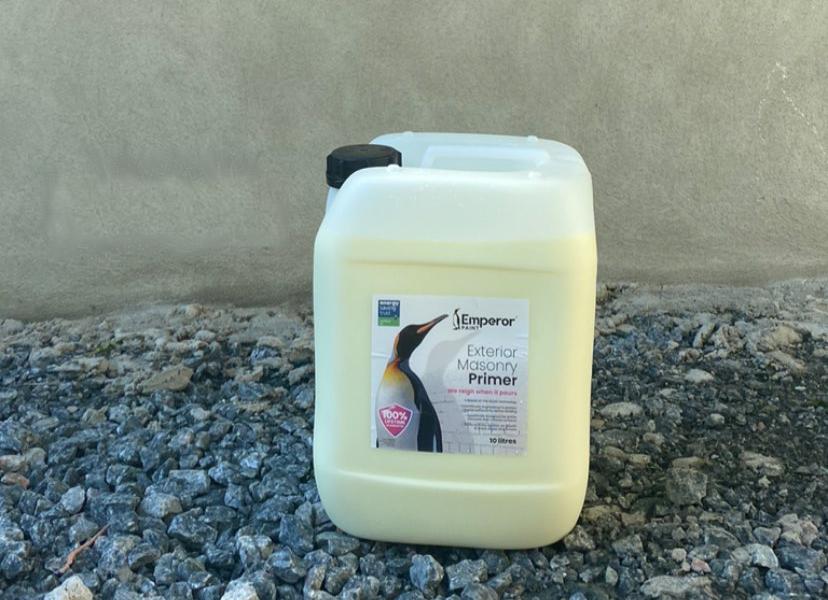
3. PAINTING
Starting from the top of the wall, use a paint brush to cut in around the edges first as these can then be rolled over with a roller to create a perfectly smooth and even finish. Once this is done, use your long-pile masonry roller to apply a thin but even first coat of paint. You can also use a medium-pile roller if you would like, however a long-pile roller has the longest fibres which is best for rough textured surfaces.
With Emepror Masonry Paint make sure you apply at 5-6m2 per litre on smooth surfaces and 3m2 per litre of heavy textured surfaces such as pebbledash.
Once you have finished your first coat, leave to completely dry as per the manufacturers instructions. In the case of Emperor Masonry Paint this is around 8 hours.
Apply the second coat of you paint, ensuring that you are achieving your desired finish as Emperor Masonry Paint will cover in two coats. Leave your second coat to completely dry before you remove your masking tape.
It will take up to a week for the full 'beading effect' of the super hydrophobic technology to be visible, although the paint will still be completely waterproof during that time.
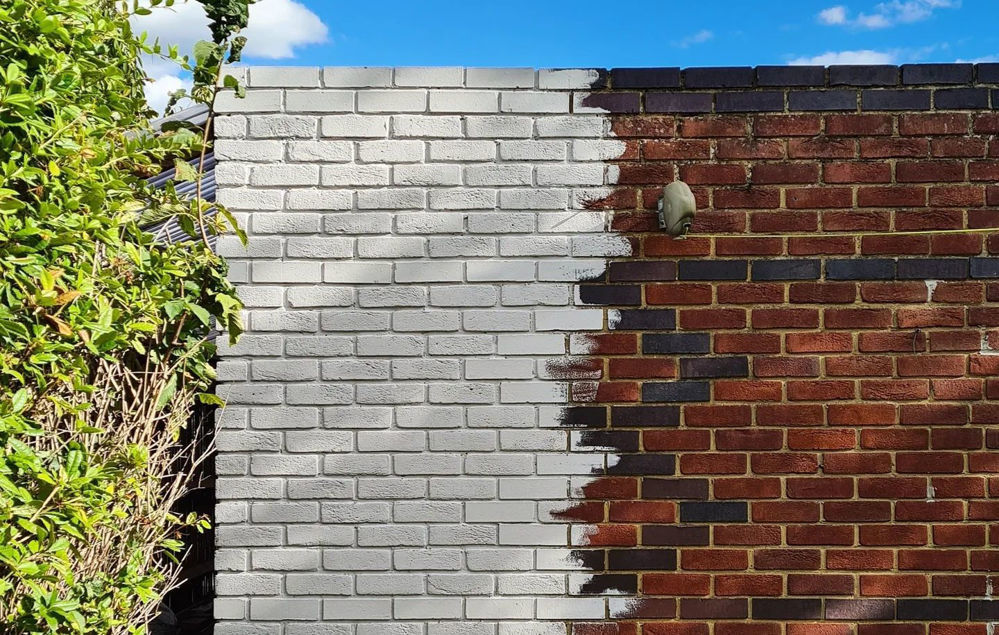
Frequently Asked Questions
Q. CAN YOU PAINT OUTSIDE RETAINING WALLS?
A retaining wall is a type of garden wall that is often built to withstand the pressure of soil and water. The problem with retaining walls is that they differ to the outside walls of a property. Rainfall can soak into any soil on the other side of the wall and cause a build-up of large amounts of water. This means that to avoid any problems with painting retaining walls, the wall should be tanked first to create a waterproof barrier between the soil and wall.
Q. WHAT COLOURS ARE AVAILABLE?
Emperor Masonry Paint is available in 18 popular exterior colours, including white, off-white, light grey & beige. We also offer a number of beautiful pastel shades such as rose pink & green mist if you are looking for something a bit different. Sample pots of Emperor Masonry Paint are available to order, which we recommend so you can get the best possible representation of a specific colour. To view all of our colours, visit our colour inspiration page.
Q. HOW MUCH PAINT WILL I NEED?
Estimating how much paint you will need to paint a house can seem difficult, however it can be simple. The amount of paint you will need depends on three things:
- The size of the wall
- The coverage of the paint your are using
- The number of coats required
Simply measure in metres the length of the area you want to paint, followed by the height. Once you have these figures, multiply them together to get the full metres squared estimate for the house. You can then work out how much paint you will need by finding the coverage of the paint you are using. This can be easily found on the manufacturers product datasheet. For example, the coverage of Emperor Masonry Paint is 5-6m² per litre.
Read our full guide on how to estimate how much paint you will need, for more information.
Q. HOW OFTEN WILL I NEED TO PAINT?
This depends on the masonry paint you are using and the surface you are painting. If you are painting a surface that is susceptible to water ingress with a standard masonry paint, this is unlikely to prevent peeling or flaking for longer than 5 years. Similarly, if you apply a masonry paint incorrectly or do not prepare the surface for painting, this can lead to paint failure. By following the manufacturer's instructions, you can expect a minimum lifespan of 25 years with Emperor Masonry Paint, although it is highly likely to far exceed this.
Q. DOES MASONRY PAINT HAVE A TEXTURE?
Masonry paint does come in smooth and textured form, although textured masonry paint is decreasing in popularity. A textured masonry paint is a standard masonry paint that contains added materials to give it a rough texture once applied.
Textured masonry paints generally come in one texture and aren't as advanced as superior masonry paints. This is why we developed Emperor Textured Basecoat, which can create a range of textured finishes that can then be overcoated using our Emperor Masonry Paint. Using either a brush or various textured rollers anywhere from light to rough textures can be created without the need for more costly and time-consuming rendering work. Crucially, Emperor Textured Basecoat contains our highly breathable nano-technolgoy, ensuring you do not compromise the performance of the wall.
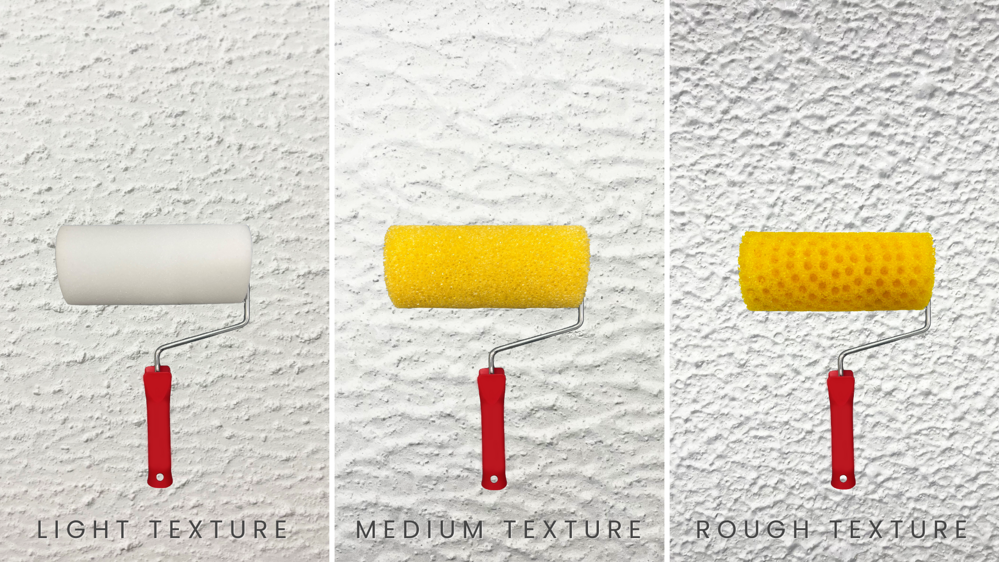
Q. WHAT FINISH DOES MASONRY PAINT LEAVE?
Paints, whether interior or exterior come in a range of finishes, which refers to their level of sheen. The more sheen a paint has, the more light in reflects and the 'glossier' it looks. Masonry paint is generally a matt finish, which is the lowest form of sheen you can get. This is because this is the most modern finish, and generally the most desired look for an external wall. There are examples of higher sheen finishes such as eggshell that you can get in a masonry paint
Emperor Masonry Paint for example is a matt finish, meaning it leaves a flat, modern sheen on houses.
We hope we have answered any questions you may have had regarding painting outside walls. If you have any more questions or need some advice, get in touch with our team of experts who are on hand to help by emailing info@emperorpaint.co.uk. Alternatively, shop Emperor Masonry Paint today and get FREE delivery on all orders.

